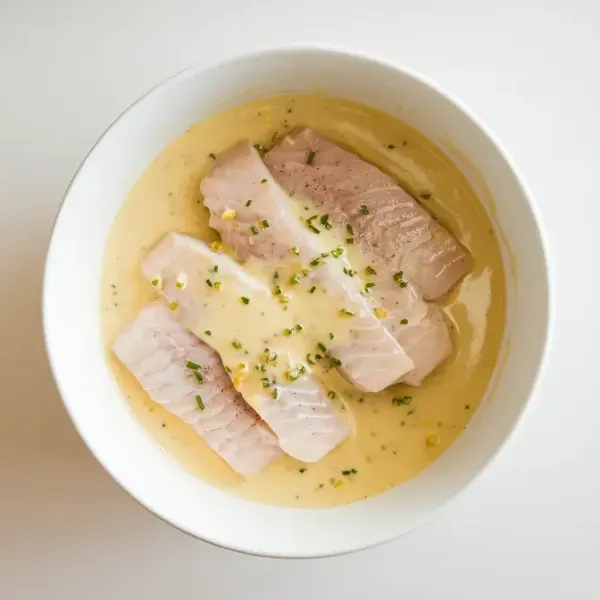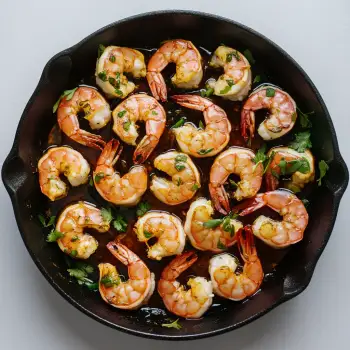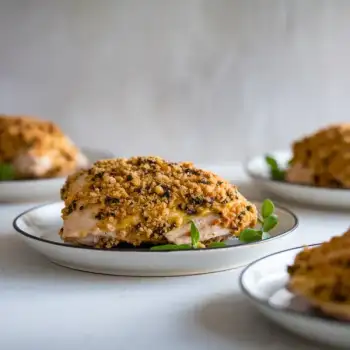
 25 minutes
25 minutesA rich and velvety shallot beurre blanc sauce perfect for drizzling over fish, chicken, or vegetables.


Shallots, diced fine
each
cups
cups
Black Peppercorns
to taste
pinches
Unsalted Butter, cut into small pieces
0.25 sticks
1. Combine Ingredients and Boil
In a small heavy-bottomed pot, combine the diced shallots, white wine vinegar, dry white wine, a few black peppercorns, and a pinch of salt. Bring this mixture to a boil over medium-high heat. As it boils, the liquid will gradually reduce. You'll know it's ready when the shallots are moist but no longer floating in liquid. This reduction step is crucial because it concentrates the flavors, forming a strong base for the sauce.
2. Incorporate Butter
Once the liquid has reduced, remove the pot from the heat briefly, then place it over very low heat. Begin incorporating the butter, adding it gradually, piece by piece, while whisking continuously. Patience is key here. Make sure each piece of butter is mostly melted and incorporated before adding the next. This slow incorporation is essential to prevent the sauce from separating and to achieve a smooth, velvety texture.
3. Final Adjustments and Serving
Keep the sauce warm but not hot, as too much heat can cause it to break. Taste the sauce and adjust the salt if necessary. If the sauce seems too thick or you want to stabilize it a bit more, you can thin it with a splash of fresh wine, broth, or water. If you prefer a smoother sauce, you can strain it through a fine strainer to remove the shallots and peppercorns. Serve the sauce immediately or keep it warm by placing it in a double boiler over warm water or a warmed thermos.
Start with the basic shallot, white wine, and butter emulsion. This is perfect with delicate white fish, steamed vegetables, or over poached eggs.
Add lemon, lime, or orange juice and zest to the reduction for a bright, tangy sauce. This pairs wonderfully with seared scallops or grilled shrimp.
Instead of using regular butter, try browning the butter beforehand to create a nutty, toasty flavor profile that complements the shallots beautifully.
Add a citrus element to your sauce by including the zest and juice of an orange, lemon, or lime. This can provide a refreshing and slightly tangy contrast to the richness of the butter.
During the reduction phase, add fresh herbs like tarragon, dill, or thyme. Strain them out before adding butter for a sauce that complements chicken or roasted vegetables.




Comments (0)